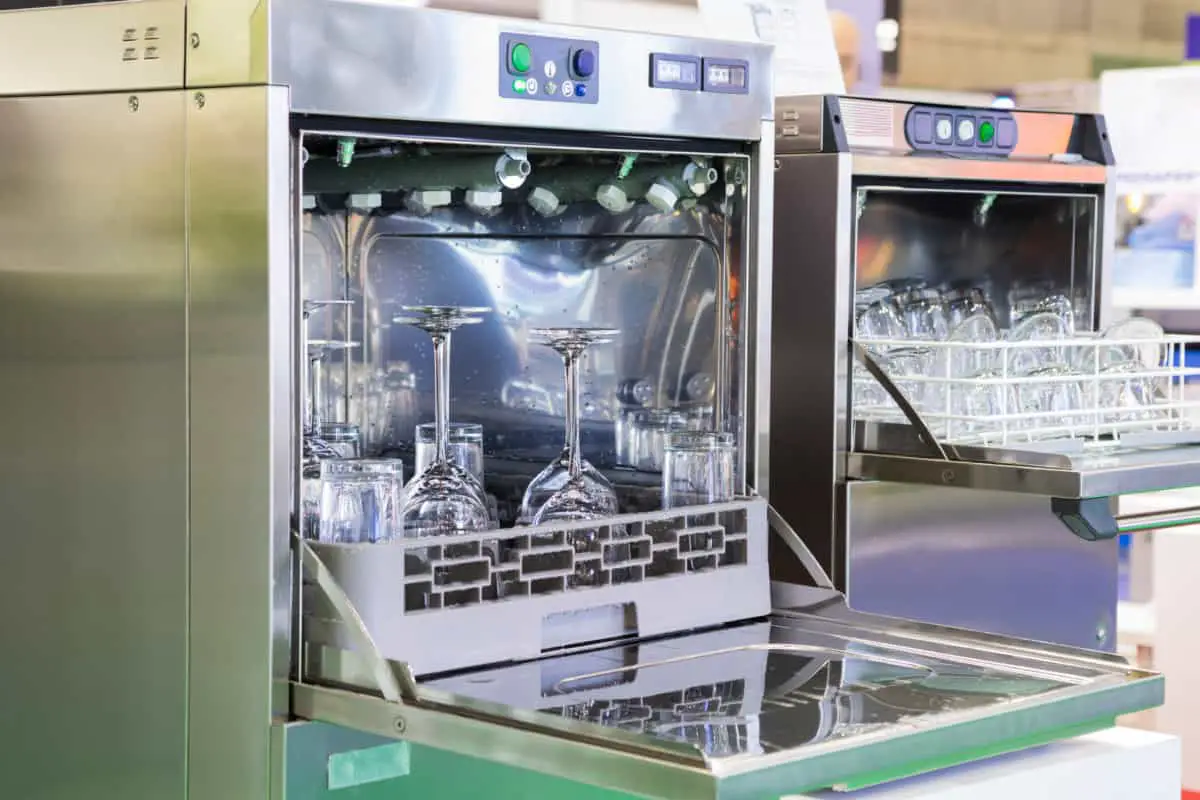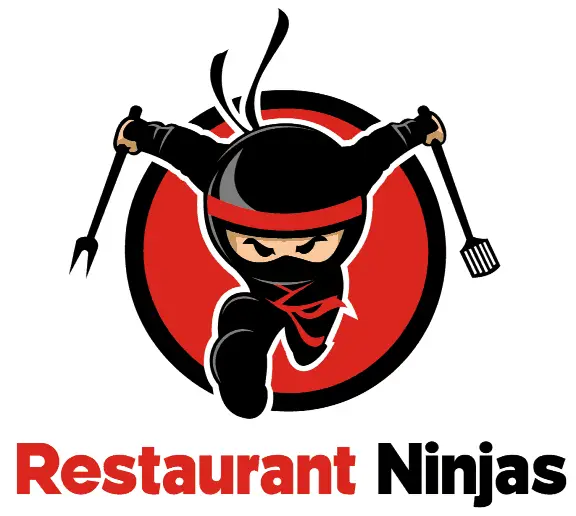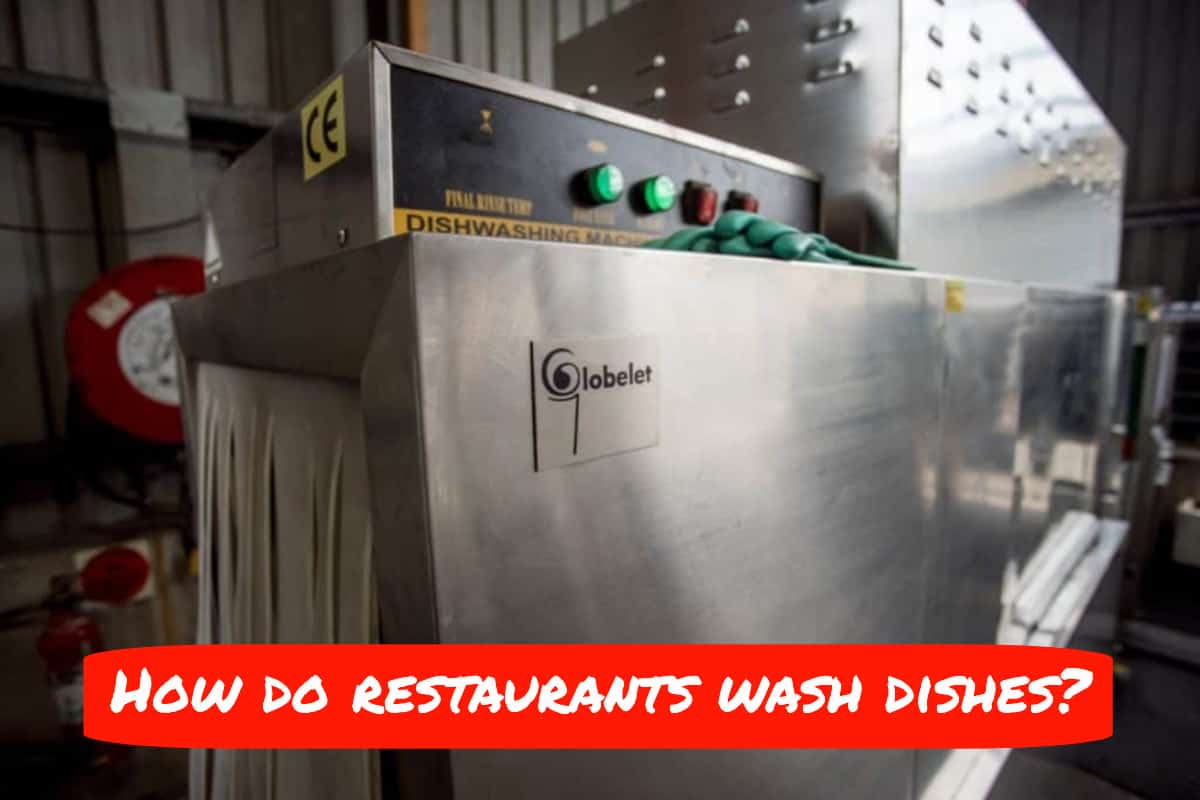Like many teenagers, one of the first jobs I ever had was washing dishes. Over the years I washed dishes in many different restaurants (that’s right, the boss has to wash dishes sometimes!). At that time, I learned more about industrial dishwashing then I care to admit.
How do restaurants wash dishes? Most restaurants wash their dishes using a commercial dish machine. Smaller operations might not need something that powerful (or they might lack the space). In this situation, a 3-compartment sink is used instead.
These machines are nothing like what you have in your kitchen (the 2-minute wash cycle on restaurant machines being your first clue!) The biggest decision that needs to be made is whether to get a machine or utilize a 3-compartment sink. Because a dish machine is a high big cost item, it is not a decision to make lightly. If you do end up opting for a machine, you need to decide what type of machine you want and whether you want to buy or lease. Read on to help decide what setup would work best for your situation.
Types of Dish Machines
The first decision to make when picking a commercial machine is whether you want to go with a high temp or low temp unit. In high temp machines, the temperature the water reaches during the rinse cycle works as a sanitizer. Dishes often dry quicker and are not subjected to harsh sanitizers, which can be harmful to the dishes, pots, and pans over the long term. The drawback is that this type of machine requires a hood, which means even higher initial costs. Another financial drawback is that these machines often require a booster heater to get the water to the appropriate temperature.
If you decide that going with a high temp machine is too big of an expense, consider using a low temp machine. Don’t be fooled by their name, these machines will get to 120-140 degrees despite being called low temp. That temperature, however, is not sufficient to properly sanitize the dishes at the end of the wash cycle, so a chemical sanitizer is used. Low temp machines do not require booster heaters and, in most places, do no require hoods, so they are a cheaper up-front investment.
Most high and low temp machines can be designated as either a door style model or a conveyor machine. The conveyor machines are my personal favorite. These things are tanks and are used by large operations like cafeterias and full-service chain restaurants. The big advantage of this type of machine is the increased capacity as you can start multiple racks at a time. Once the first rack is finished, it will be ejected from the machine and left there until you are ready to unload while simultaneously starting the second (and sometimes even third) rack. This might not sound like that big of a deal, but it allows your dishwasher to multitask better during loads which will cut down your labor costs and improve your overall cleanliness. Door style machines require you to manually load and unload each rack of dishes as it goes through each cycle (of roughly two minutes). Because of this, it is very hard to be as productive as with a conveyor machine that automates some of the work. It probably goes without saying that conveyor machines are the more expensive of the two.
For very small operations, you have another choice altogether. Under-counter dishwashers are a good option if you need something on the small side. These machines can wash 2-3 dozen glasses at a time. These smaller units are great for bars and resemble your kitchen dishwasher more than their commercial older brothers discussed above.

Where to Get a Dish Machine
Where you buy your machine will depend on whether you want to buy or lease it. While on the surface leasing a machine might sound like it is not a smart long-term move financially, I strongly advocate doing this over buying. The reason for this is simple: 24/7 maintenance. These machines tend to be the most prone to malfunction in a restaurant due to their heavy use. They usually need to be serviced every month or two on average. Aside from the 24/7 maintenance, other benefits include a much smaller up-front investment, and a fixed, minimum monthly expense. The negative to leasing is that you will probably have to carry higher insurance on the machine as most companies require coverage of the entire replacement cost. Another negative is that leases are signed for a timed duration. For example, if you were to lease a machine for 36 months and decide to close your restaurant 14 months in, you are on the hook for the final 22 monthly payments. In the end, I think leasing is almost always the way to go. Case in point: every large chain restaurant that I have worked with not only leases their dish machines, but they make the dish machine the only piece of equipment they do not buy outright (despite having more than enough capital to do so). These guys literally have millions of dollars to research what makes the most sense in the long term, so I think that following their model is a good idea.
While I’m obviously pro-lease when it comes to dish machines, there are some benefits to buying over leasing. First, as mentioned above, you will not be forced to carry insurance on the entire replacement cost of the machine. You also may qualify for some major tax benefits under section 179 of the IRS code which allows you to depreciate the value of the purchase over one year (rather than several). Depending on the model you buy, you may also qualify for deductions based on the energy efficiency of the model. Given the complexity of tax code, I cannot stress enough to talk this over with your accountant before making a decision under the assumption that you will qualify for tax benefits. It should go without saying that the final benefit of owning a commercial dish machine vs leasing is that rather than paying a company to use their asset, you OWN the asset, which means that if your business went south, you would have a potentially valuable item to liquidate to help with recovering some of your investment.
If you decide to buy a machine, go to your local restaurant supply store and see what kind of deal you can get. Be aware these things are negotiable! Be sure to compare your best offer with www.webstaurantstore.comto ensure you are getting the best offer possible. If you decide to lease a machine, I cannot recommend Ecolab enough. I have used them for over two decades and their service and products are top notch. Though I have never used them before, I have also heard good things about Maines leasing program.
Setting Up a 3-Compartment Sink
Let’s say you decide to forgo a machine due to cost or space. In this scenario, you need to set up a system that will allow you to comply with health codes. The industry standard for this is the 3-compartment sink method. With this method, you use a 3 compartment sink with the setup of the sink as follows from left to right: wash, rinse, sanitize. The wash sink would contain some type of detergent and be around 110 degrees. The second sink gets 110-degree water as well, but with no detergent. The third and final sink should use a sanitizer and should be set to the temperature recommended by said sanitizer. Remember to change your water often (at least every hour) and clean and sanitize each sink between uses.
What is the Best Setup in for You?
Your concept is the biggest factor in making this decision. If you are opening a full-service restaurant that seats more than 30, the investment in a machine will pay for itself very quickly. If you are opening something that involves counter service and disposable plates where you are only going to be washing pots and pans, then picking a 3-compartment sink is a great way to lower your startup costs. When choosing between high/low temp and conveyor vs door models, your capital resources and space are your biggest deciding factors. Don’t be afraid of going too small though, I ran a 4 million dollar operation for years using a low temp door style model. While it was not exactly ideal, it did get the job done just fine. Whatever you choose, remember that the system is only good as the operator and the training given to that operator, so, as always, take no shortcuts with your training!

